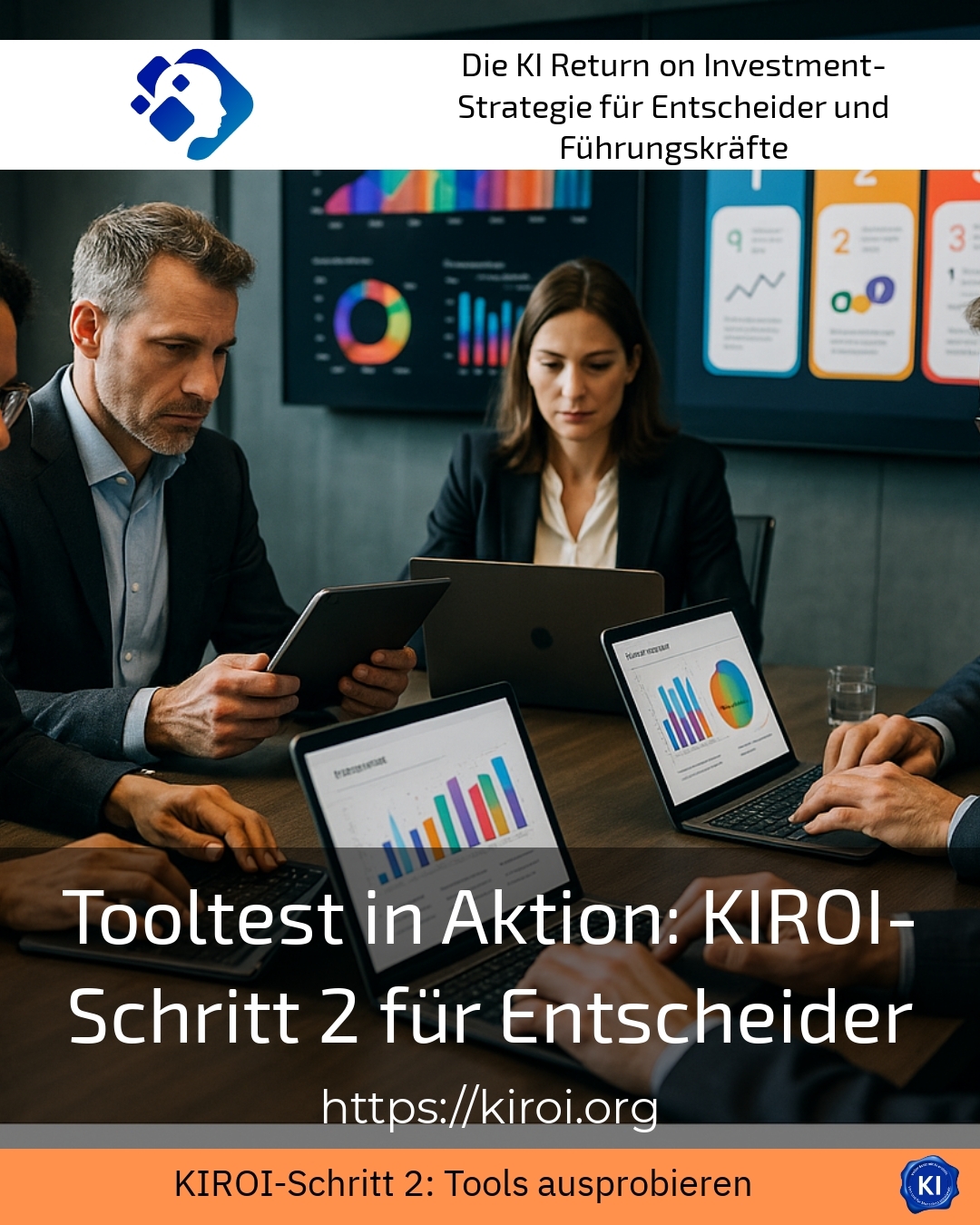Today, tool testing is a key component for decision-makers who want to specifically evaluate digital tools and create sustainable added value. Many companies are faced with the challenge of selecting the right solution from a wide range of options. The tool test in KIROI Step 2 offers a structured approach based on practical use cases and well-founded criteria. This makes it possible not only to test the technical functions, but also to ensure integration into existing processes and acceptance by employees.
Why the tool test is indispensable in the decision-making process
Without a systematic tool test, decisions often come to nothing. Companies often report that they lose a lot of time and resources because they choose on the basis of advertising promises or superficial comparisons. The tool test helps to reduce these uncertainties. It begins with a precise needs analysis and the definition of specific use cases. Only then are suitable tools selected and tested in real projects.
A manufacturer of production technology uses the tool test to compare different image processing systems. The focus here is on recognition accuracy and integration into the production processes. A service provider in the healthcare sector tests document automation solutions for user-friendliness. A financial services provider tests various tools for risk analysis in order to ensure integration into the existing IT landscape.
The tool test is therefore more than just trying things out. It is an iterative process that enables continuous learning. This is the only way to find the right solution and anchor it in the company in the long term.
Tool testing in practice: examples from various industries
Trade and logistics
In retail, the tool test is used to test the practicality of AI solutions for warehouse management and sales planning. A logistics company uses the tool test to evaluate route optimisation software with AI algorithms. The tools are tested under real-life conditions in order to increase the efficiency of supply chains. This enables companies to recognise at an early stage whether a tool will deliver the desired results.
Education and office organisation
In the education sector, the tool test enables the selection of AI-supported support tools for individualised learning paths. In office organisation, the tool test focuses on simplifying routine tasks such as data management through automation. A marketing team is testing various SEO and automation tools to make campaign management more effective.
Facility management and healthcare
A facility manager tests various maintenance and energy efficiency solutions under real-life conditions in order to reduce operating costs. In the healthcare sector, tools for document automation are tested for their user-friendliness and integration. This ensures that the solutions meet the requirements of employees.
BEST PRACTICE with one customer (name hidden due to NDA contract) A medium-sized company from the manufacturing industry wanted to introduce an early warning system for error detection. The tool test was carried out in three phases: Firstly, the requirements were defined, then various systems were tested in production and finally employee feedback was collected. The documentation of the test results enabled a transparent decision to be made. The selected system reduced production downtime and significantly stabilised the processes.
How to successfully implement the tool test
A successful tool test depends on transparency, communication and a willingness to learn. The involvement of relevant stakeholders is crucial. This is the only way to create a compatible and efficient solution for every area. Systematic documentation of all steps and results ensures traceability and transparency.
Companies often report that systematic testing increases acceptance among employees. Employees are involved in the process at an early stage and their feedback flows directly into the evaluation. This prevents the tool only fitting in theory but not being accepted in practice.
Support through transruption coaching helps to provide impetus and accompany processes. This creates a safe space where new knowledge can be built up and implemented in a targeted manner. The tool test becomes not just a technical check, but a strategic element for sustainable development and growth.
My analysis
Tool testing as part of a structured procedure such as KIROI step 2 provides practical insights that go far beyond pure functionality. It helps decision-makers to make the best choice from the multitude of available tools, optimise use and promote acceptance within the company in the long term. A comprehensive analysis, the integration of user feedback and accompanying support are important building blocks for success.
Further links from the text above:
Tool test in KIROI step 2: How decision-makers find the best AI solutions
Mastering tool evaluation: KIROI step 2 - AI tools
Tool test in focus: How to master KIROI step 2
Tool test in focus: KIROI step 2 for decision-makers
Tool test in KIROI step 2: How decision-makers find the best
For more information and if you have any questions, please contact Contact us or read more blog posts on the topic Artificial intelligence here.















